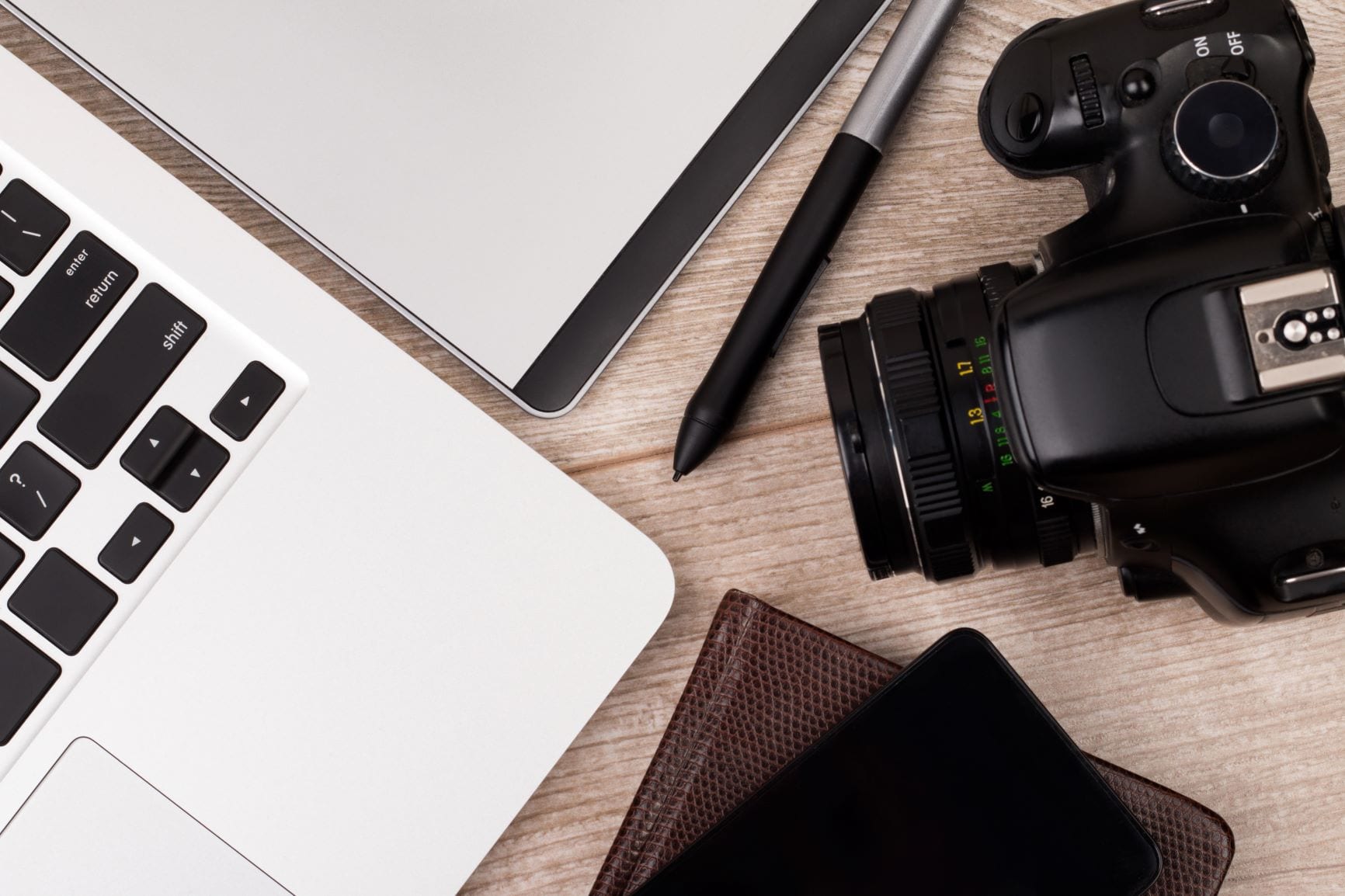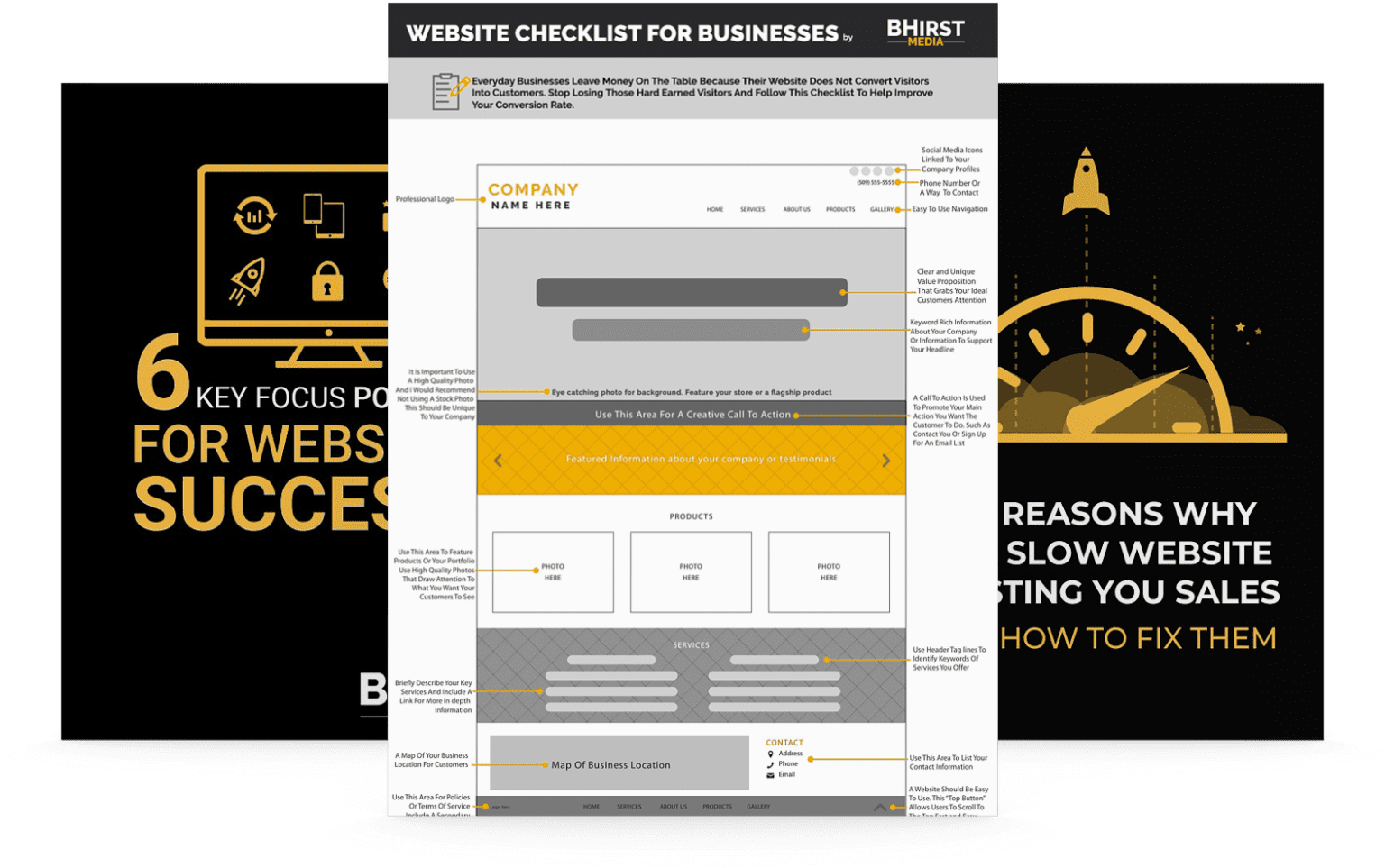
You want your website to stand out from competitors and have as professional a presence as possible. High quality images plays an important role in drawing eyes and keeping them there.
It’s not uncommon for business owners who are just starting to do their own photography or source images from stock sites to help save money or add their own personal flair to their website. While this may seem like a pennywise decision, it can have an adverse affect on your ability to convey your brand’s image and values in the way that you planned.
When creating a website, design is one of the first things that comes to mind. You’ll want to consider:
Do not sell your site short and skimp on imagery. People are visual creatures, and images are the first thing a visitor sees alongside your logo. Let’s dive in and take a look at why imagery is so important to your brand and your website.
A high-quality image is an image that will get your content noticed. The size of the image needs consideration, as well as the use of the picture.
The image resolution should be high enough not to lose any quality between devices as determined by the number of pixels per inch. Features of the image should include proper lighting, focus, and it should be well-framed. Depending upon the purpose of the image, high quality may mean a different file format.
The TIFF format is a high quality image. Generally, this file format is for commercial purposes. This format lacks compression, so it is not ideal for image web use. However, this is the perfect option for print. These files are large and suitable for use in any photo editing software, but will slow down page load times if used on your site.
JPEG formats are the most common and universal formats. However, there are different quality formats you can choose and for better quality, select high. Websites, social media, and email are the primary uses for this photo format.
One of the most significant benefits of JPEG is the space saved. Unlike TIFF files, these files can easily be stored on local storage, memory cards, and flash drives. One thing to keep in mind is editing these files decreases the quality of the images. It is recommended that you utilize JPEGs for your website imagery, as they retain a reasonable amount of detail at a reduced file size that is ideal for websites.
PNG file formats allow for transparent backgrounds, unlike JPEG, which requires a solid color background. This format also works well with drop shadows. Logos frequently use the PNG file format due to its quality and size.
Graphics are best suited to PNG formatting since the degree of transparency is controllable. If you desire images with vibrant colors, then PNG is the file format of choice. However, these files are larger than JPEG so that they will take up more file storage space. Utilize PNG files for logos and other images that require transparency to be overlaid with backgrounds or elements, but use them sparingly, as they can slow down page loading times.
GIF is similar in quality to PNG, but it is better suited for animated graphics. Like PNG files, they offer transparent backgrounds, but unlike PNG, there is no wide range of color options, partial transparency, or shadow effects.
The full GIF animation is in one compressed file, so the size remains small, potentially. Longer GIFs can bloat files sizes, however, so keep this in mind when considering file types. Therefore, it is perfect for simple icons and web graphics. However, these colors are less vibrant than PNG colors, and they are a single layer making them less desirable as an option for printing.
PSD files are for Adobe Photoshop and allow individual layer editing. PSD files are not suited for use on a website, but they do a great job of preserving image quality. These files are often quite large and better suited for printing.
Adobe Photoshop allows PSD file editing, effects added as well as other image manipulations. When done editing, if you merge the images, you will no longer edit the layers. You cannot un-merge them. PSD files are perfect for editing images. Think about that 80-year-old photo of your grandparent’s family. Perhaps it has water stains on it? Working on it as a PSD file allows editing of the water stain, and the photo can look as good as new.

With so much emphasis on a quality website, it only makes sense that the site also has quality images. Of course, getting visitors to your site is the first step, but you want to keep them there and let them know what you can do for them. Your content may not be so different from competitors, but your images can grab them and keep them coming back.
High quality images that complement your content allow Google to notice your site more. The images should be authentic and work well. You have worked so hard to develop a brand and need to use high quality images to help build your brand communication and share your brand’s message.
Photos are the first thing visitors to your site will notice. Grab their attention then and there. Authentic imagery tied to your brand allows the photos to create brand recognition as much as your logos. Additionally, high quality images enable a customer to get to know you and your business. What sets you apart from competitors and why. Professional photos of your business and what you do add a level of trust to your brand identity.
You could use stock photography, but these images are not identifying your brand specifically. Although they are easily accessible by you, they are also easily accessible to everyone. Everyone on the internet can share those images.
Professional photographers spend years studying their craft. They have professional equipment and know many great ways to get the best photos for the appropriate message. If your competitors are using stock photos, you will gain a competitive edge, especially if users can identify with the message your high quality image is portraying.
For example, consider a school district trying to show their community all of the great things they are doing in the public schools. However, the school district uses stock photos of students. The school district has a uniform policy, and the stock photos do not have children in uniforms. How can the community personally identify with the conflicting information in the images?
Creating a custom website for your business seems as easy as using Google.
When you search “create your website,” you’ll find results that include everything from a list of platforms to build on as well as courses available for those who want to do it all on their own.
But designing a website for your business takes time, experience, and a creative eye.
It may seem like it’s going to be easy to create a website yourself — but almost every customer we have ever had that has tried to do it alone regrets it. It always takes longer than they think it will, and the result is never what they hoped for.
At Bhirst Media, we have experience building websites for various customers and a variety of different needs. We understand what it takes to build a website that looks good, is optimized for search engines, and is designed for lead generation.
You don’t have to try and do this alone — let us help. Check out our website design, development, and website care plans today.
